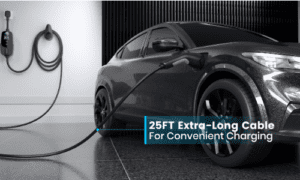In a world where mobile phones are a constant companion, it’s no surprise that Mobile Experience Optimization (MEO) has become a fundamental part of digital marketing strategies. For businesses, especially those like YDK Business, which specialize in driving digital growth, improving mobile user experience is no longer just a nice-to-have. It’s an absolute must. With mobile internet usage surpassing desktop, ensuring that your mobile visitors have a seamless, intuitive, and enjoyable experience is key to capturing their attention—and keeping it.
In this article, we’ll explore what MEO is, why it’s so important for businesses, and how you can enhance the user experience on mobile devices to drive conversions and growth.
What is MEO (Mobile Experience Optimization)?
Mobile Experience Optimization (MEO) is the process of enhancing the way users interact with your website, app, or digital content on mobile devices. It’s about making sure that your users can easily navigate, find the information they need, and complete actions (like making a purchase, filling out a form, or reading a blog post) without frustration.
With mobile users accounting for a significant portion of online traffic, it’s essential that businesses focus on providing a mobile-friendly experience. Optimizing the mobile experience goes beyond just having a responsive website—it’s about creating a smooth, engaging, and effective experience for every mobile user.
Why MEO is Crucial for Businesses
Let’s look at the numbers—according to a Google survey, nearly 70% of mobile searchers visit a business within an hour of their search. So, if your website is slow, hard to navigate, or doesn’t function well on mobile, you’re not just losing potential customers—you’re losing out on business that could have been yours.
Here’s why MEO is crucial:
- Mobile-first indexing: Google has shifted to mobile-first indexing, meaning that it uses the mobile version of your site to determine your ranking on search results. If your mobile experience isn’t optimized, your website’s visibility on Google could suffer.
- Higher conversion rates: A smooth, efficient mobile experience makes it easier for users to take action, whether that’s purchasing a product, signing up for a service, or getting in touch. A frustrating mobile experience, on the other hand, leads to high bounce rates and missed opportunities.
- Enhanced brand perception: A mobile-friendly, well-designed site makes your business look modern and user-centric, building trust and credibility.
For businesses like YDK Business, specializing in improving online strategies, helping clients optimize their mobile experiences means keeping them competitive in a digital world that’s increasingly mobile-first.
Key Strategies to Enhance Mobile User Experience
So, how do you optimize the mobile experience for your audience? Let’s dive into some best practices that can help improve mobile user experience and make a lasting impression.
1. Responsive Design is a Must
The very foundation of mobile optimization is a responsive web design. This ensures that your website adapts to different screen sizes—whether it’s a smartphone, tablet, or other mobile devices—without losing functionality or aesthetic appeal.
How it helps: A responsive website automatically adjusts its layout and content to fit the size of the screen, offering an optimized viewing experience without the need for zooming or scrolling horizontally. This simplicity leads to better user engagement and satisfaction.
Tip for businesses like YDK Business: Ensure that all clients’ websites use responsive design to guarantee that their content looks great and functions seamlessly on any device.
2. Prioritize Mobile Speed
One of the most significant factors that impact mobile user experience is website loading speed. According to Google, 53% of mobile users will abandon a site if it takes more than three seconds to load. That’s a huge chunk of potential customers walking away.
How it helps: Faster load times lead to a smoother browsing experience, higher engagement, and ultimately, better conversion rates.
Tip for businesses: Optimize images, leverage browser caching, and reduce unnecessary scripts to speed up loading times. Tools like Google PageSpeed Insights can help identify specific issues affecting speed.
3. Simplify Navigation
On mobile, less is more. Simplified navigation is essential for creating an intuitive mobile experience. Small screen sizes and touch-based navigation mean that complex menus or excessive content can make it difficult for users to find what they’re looking for.
How it helps: Clear, easy-to-use navigation ensures that users can quickly find the information or products they need, improving the chances of conversion.
Tip for businesses: Keep the navigation menu simple, use a hamburger menu (the three horizontal lines icon) to hide additional options, and place important links (like contact info, shopping cart, etc.) in easy-to-reach areas.
4. Optimize for Touchscreen Interactions
Mobile devices are built for touch, and optimizing for touchscreen interaction is crucial. Links, buttons, and forms need to be large enough to tap comfortably without error.
How it helps: A mobile site designed for touch interactions reduces frustration and increases user engagement.
Tip for businesses: Make sure buttons are large and easy to tap, and avoid placing clickable elements too close together. Forms should be simple and easy to fill out with minimal typing.
5. Focus on Content Readability
When users visit your site on mobile, the content should be easy to read and digest without having to zoom in or scroll excessively. This includes font size, line spacing, and contrast.
How it helps: Readable, well-organized content increases the likelihood that users will stay on your site longer, read more pages, and take action.
Tip for businesses: Use large, legible fonts (at least 16px), ensure there’s enough contrast between text and background, and break up long blocks of text into shorter paragraphs.
6. Integrate Mobile-Friendly Payment Options
If you’re running an e-commerce store, ensuring that your mobile payment process is easy and fast is critical. Mobile users want convenience, and a complicated or lengthy checkout process can quickly drive them away.
How it helps: Easy payment options such as Apple Pay, Google Pay, or PayPal streamline the checkout process, increasing conversion rates and reducing cart abandonment.
Tip for businesses: Implement one-click payment options and allow users to checkout as guests without creating accounts.
Monitoring and Iterating for Continuous Improvement
Mobile experience optimization is not a one-time job—it’s an ongoing process. Regularly monitor your website’s mobile performance using tools like Google Analytics, Hotjar, or Crazy Egg to track user behavior and identify areas for improvement.
YDK Business and similar agencies can help businesses set up tracking tools to gather insights on user behavior, bounce rates, and mobile traffic patterns. This data is invaluable for making informed decisions and fine-tuning the mobile experience over time.
Conclusion
Mobile Experience Optimization (MEO) is essential for ensuring that users have a seamless, enjoyable, and frustration-free experience when accessing your website on mobile devices. By implementing strategies like responsive design, faster load times, simplified navigation, and mobile-friendly payment options, businesses like YDK Business can help clients stay ahead of the competition in a mobile-first world.
In today’s fast-paced, mobile-centric landscape, optimizing for mobile is not just about providing a better user experience—it’s about driving real business results. So, whether you’re a local coffee shop or a global e-commerce giant, prioritizing MEO will give you the edge you need to capture and convert mobile users, ultimately driving growth and success.



































